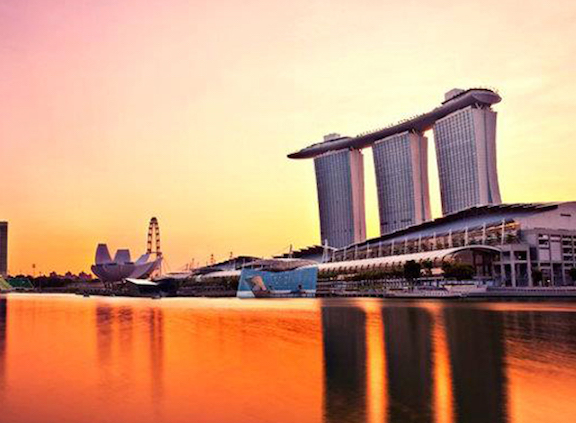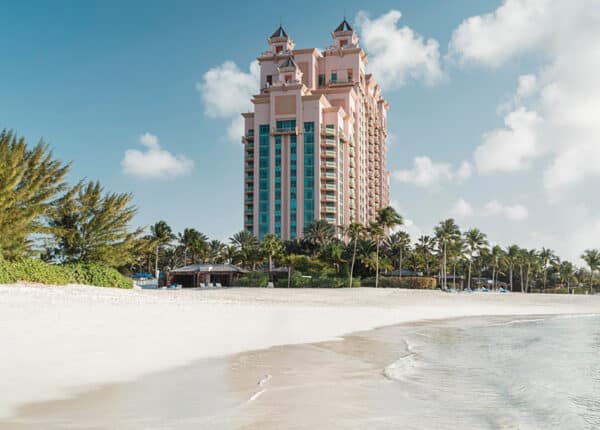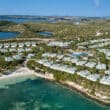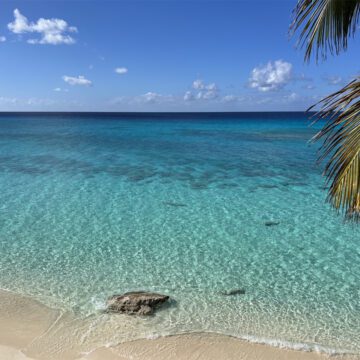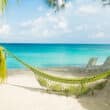By Paul Hay
CJ Contributor
Singapore is an island city-state in Southeast Asia. It was founded by Britain as a trading colony in 1819. Lee Kuan Yew became its first Prime Minister in 1959. Four years later, Singapore joined the Malaysian Federation, but was asked to leave in 1965.
After separation from the Malaysian Federation, it became a sovereign republic. Without a regional alliance, facing hostile neighbours and the imminent departure of the British armed forces, its very existence was in jeopardy.
Lee Kuan Yew concluded that: “…we had to make extraordinary effort to …do things better and cheaper than our neighbours, because they wanted to bypass us and render obsolete our role as entrepôt and middleman for the trade of the region.”
In the Competitiveness of Small Nations: What Matters? , authors Densil Williams and Beverly Morgan note that Caribbean islands have economic structures, history, and institutions similar to Singapore in the 1960’s. Singapore subsequently surpassed their development.
With respect to Jamaica, Singapore is presently one of the three global logistics hubs: the others being Dubai and Rotterdam. Jamaica plans to become the fourth global logistics hub: serving Latin America and the Caribbean, as well as the U.S. Gulf and east coasts.
In the Logistics and Supply Chain Management page of the current website of Singapore’s Economic Development Board (EDB), Changi Airport is featured prominently for global connectivity. The story behind the development of this airport could prove instructive to Jamaica’s Logistics effort.
Changi International Airport was formerly the Royal Air Force Changi Airbase. On departure of British forces, abandoned airfields would typically be used for light industry or agriculture. But, Lee Kuan Yew thought neither use suited Singapore. Instead, he negotiated the early access of EDB to this airbase.
Nevertheless, the airport was almost never built. An airport at Paya Lebar was in use prior to the oil crisis in 1973, but it was considered inadequate for the future growth of Singapore’s aviation sector without significant expansion.
A British aviation consultant had recommended that a second runway should be built at the Paya Lebar Airport, and completed by 1978. This they concluded “would entail the lowest land acquisition costs and require the least resettlement”. But, the Serangoon River would have to be diverted.
After the oil crisis, a second study was commissioned: this time by U.S. consultants, who concurred with the British consultants that a second runway should be built at the Paya Lebar Airport. They also warned that construction of two runways at Changi Airbase could not be completed by 1978.
Lee Kuan Yew was unconvinced. He constituted a committee to reconsider the Changi relocation. This committee also supported the recommendation of the aviation consultants that the airport should not be relocated to Changi, an additional runway should be built at the Paya Lebar Airport.
Finally, Lee Kuan Yew asked the Chairman of the Port of Singapore to chair a second committee to re-examine the Changi relocation. Their conclusion was that an additional runway at Paya Lebar could not be completed before 1984, because allowance was needed for the proper compaction of the river bed.
The first runway of the Changi International Airport was completed and opened in 1981. The second runway was completed in1984. When completed, it was Asia’s largest airport. Three decades later, it is still one of Asia’s largest cargo airports.
In the words of Lee Kuan Yew, Changi Airport “helped Singapore become the hub airport of the region”. It involved resettlement and demolition of hundreds of buildings, exhuming graves, clearing swamps and reclaiming land from the sea.
Currently, one of its three terminals is being expanded. The construction of this 134,000 square meter building dubbed the “Jewel Airport Expansion”, which will also be connected to the two other terminals, is scheduled for completion in 2018
In Jamaica, circumstances are similar to what existed prior to the Changi relocation. Kingston’s Norman Manley International Airport (NMIA), originally called the Palidoes Airport, was built in 1948. But, its expansion is confined by the narrow Palisadoes peninsular on which it is located.
Though located close to the Port of Kingston, the government of Jamaica has designated the former Vernamfield Airbase as the next cargo airport. Vernamfield is a 55 km flight distance from NMIA. The property is located at Portland Bight in Southern Clarendon.
During World War II, Britain leased Vernamfield and the Goat Islands to the United States. An airbase was constructed at Vernamfield and a Naval base at Goat Islands by 1941. Vernam Field Air Force Base, as it was called, had three runways.
The base was reduced to caretaker status towards the end of 1944, and the U.S. closed both bases in 1949, when military engagement shifted from Europe to the Pacific. This involved the removal or demolition of all of its structures.
The area has been derelict from that time. But in March 2014, the Honourable Anthony Hilton – Minister of Industry and Investment – speaking at the Northern Caribbean University, is reported as saying it is to become an “international air and sea cargo hub”.
The 1,174 hectare Vernamfield property is proposed to be a major economic driver in ”the country’s logistics revolution”. The Port of Kingston and Caymanas Special Economic Zone (CSEZ) are also proposed to be linked to Vernamfield by railway and Highway 2000.
So, major development is proposed for the area. However, the larger Portland Bight Area, which is spread over an area of 187,600 hectares, was designated a protected area by the Jamaican Government in 1999 to protect both its terrestrial and marine area.
In the Summary of the Environmental Management Scoping of the Portland Bight Area, Inclusive of the Goat Islands, it is noted that the area “is not exclusively an environmental conservatory” but is recognised as a “multi-use National Park”.
The Portland Bight Protected Area (PBPA) is actually home to a chemical lime quarry, an Ethanol Plant, the island’s main power station, power barges, and Rocky Point Port. The area has three designated fish sanctuaries, of which the Goat Islands is not included.
Unlike Singapore, Jamaica does not have hostile neighbours. But, Jamaica’s neighbours are equally intent on bypassing it as a logistics hub. Chief of which is Panama itself. It has been constructing its logistics infrastructure and operating it in advance of completing the widening of its Canal.
That strategic advantage is to be challenged by the construction of the proposed Nicaragua Canal, which would give Jamaica the advantage of having ports with direct access to both canals. Jamaica’s central geographical location also makes it equally accessible by air
Lee Kuan Yew himself epitomised development-centred leadership: first in recognising Changi’s potential, giving EDB early access to the airfield, choosing the chairman of the Port of Singapore Authority (PSA) to manage the project, and ensuring the continued improvement of the facility.
In contrast, closure of the Vernamfield and Goat Islands bases predate Changi by decades, but no one managed their transition into civilian use. Instead, the facilities were demolished and allowed to go to ruins. In fact, NMIA was being built when Vernamfield was being shut down.
Selecting the chairman of the National Logistics Intitiative Council to manage the relocation to Changi allowed for a multi-modal solution to the problem. This may also be beneficial to Jamaica if it follows suit, or at least manage the Vernamfield/Goat Islands project as a single initiative.
Some may say Lee Kuan Yew simply disregarded all studies until he found one that suited him. But, Changi stands as proof of his visionary stewardship and legacy for Singapore’s continued pre-eminence as a global logistics hub.
Previous studies by the aviation consultants cited two problems with relocation to Changi: its higher cost and longer construction period. The latter was proven false and the former would have been more expensive in the long run, as Paya Lebar Airport could not have accommodated subsequent expansions.
With the exception of a report recommending relocation the Goat Islands Port, Jamaica has had no objection to the building of the Vernamfield Airport, although both facilities are proposed to be built in the PBPA and will be interconnected.
The report, titled “Economic Comparison of Alternatives to Building a Port on Goat Islands: Does Jamaica need to Sacrifice a World Class Conservation Site in Order to Build a World Class Port?”, concluded that Macarry Bay located outside PBPA would be a superior location to Goat Islands.
This report was undertaken by the Conservation Strategy Fund, Conservation Agreement Fund, and Niras Fraenkel Limited. It states that construction of the port at Macarry Bay was estimated to cost US$200-million less than at Goat Islands.
Macarry Bay was considered superior to Goat Islands “except with respect to its access to the road network and Kingston...”. This cost advantage is therefore questionable. The port is not meant to be a stand-alone facility but part of a multi-modal logistics hub.
Also, construction costs typically dwarf in comparison to operating expenses anyway. So, locating the port outside the PBPA simply to transport freight back and forth from the Vernamfield Airport, located within the PBPA, makes little sense and is unlikely to be cost-effective.
Like Singapore’s initial studies, this report by conservation special interest groups and a port and marine-engineering consultancy does not seem to consider the wider picture of building a world class logistics hub, not just a “World Class Port”.
A consortium of Chinese investors was once interested in developing the Caymanas Special Economic Zone (CSEZ), but required an airport. The previous government-administration was only able to propose relocation of the Tinson Pen Airfield, then adjacent to the Port of Kingston, to CSEZ.
The Vernamfield/Goat Islands initiative offers a multi-modal solution to kick-start the Jamaica Logistics Hub. Understandably, a life-cycle analysis needs to be conducted to examine all environmental and operational concerns and guide the present administration’s deliberation on this project.
For Singapore, developing Changi presented a greater environmental impact compared to Paya Lebar. Hundreds of buildings had to be demolished and occupants resettled, graves had to be exhumed, swamps cleared, and land reclaimed. But in the final analysis, Changi proved the better choice.
The truth be told, no other suitable alternative has been forthcoming outside PBPA. No one is even knocking at the door to develop a world-class eco-tourism facility in the area. So, the question is: does Jamaica really want to be the fourth global logistics hub, or not?
Paul Hay is the founder and manager of Paul Hay Capital Projects.

